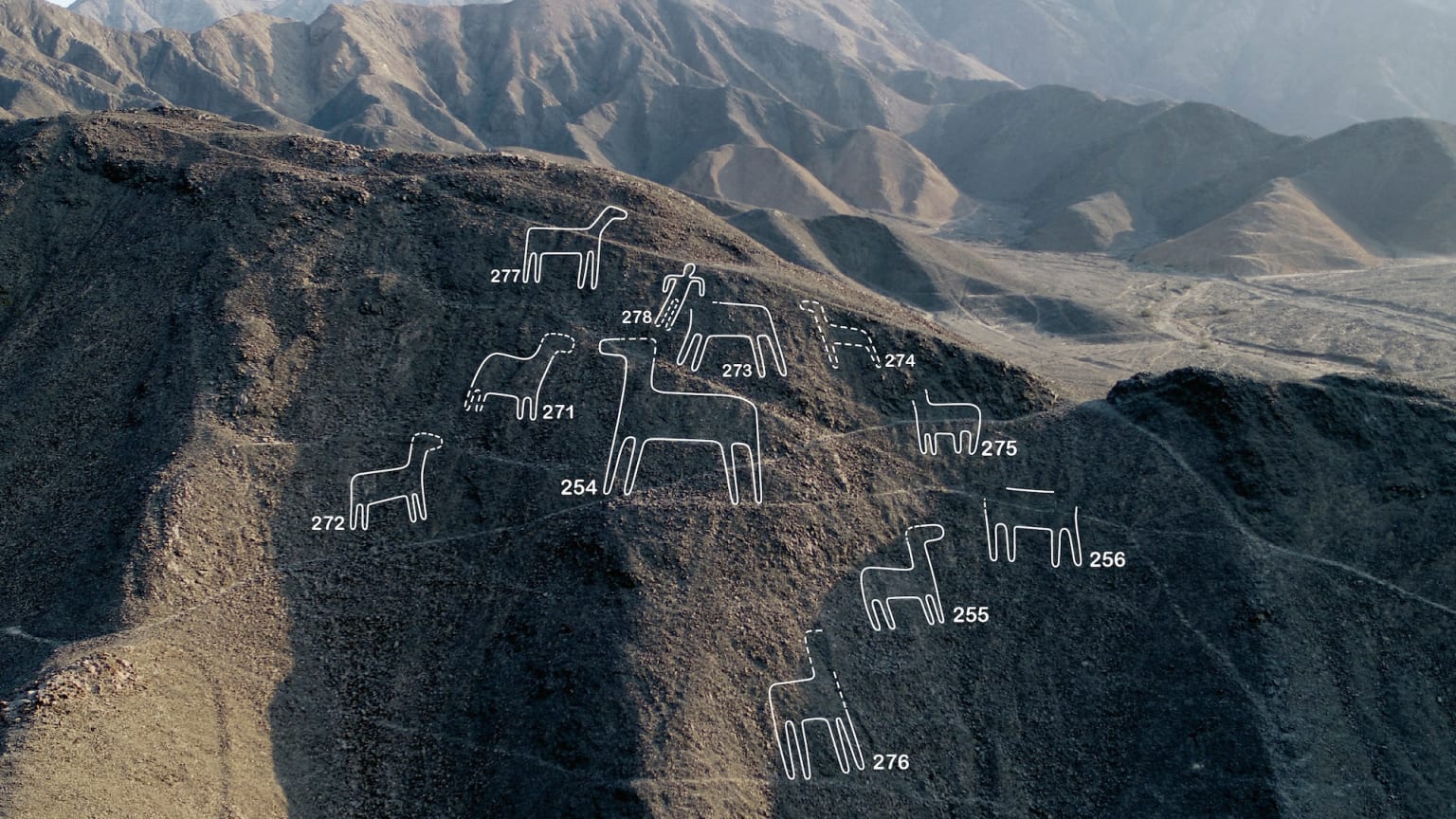Over 150 New Geoglyphs Discovered in Peru's Nazca Plain
Earlier this month, researchers from Yamagata University [Japan] reported that, through aerial photos and drones, they discovered 168 new designs on Peru's Nazca Plain and surrounding areas.

Facts
- Earlier this month, researchers from Yamagata University [Japan] reported that, through aerial photos and drones, they discovered 168 new designs on Peru's Nazca Plain and surrounding areas.
- Peruvian and Japanese researchers spent two years scanning the UN-designated World Heritage site. The number of drawings found is nearly double the amount known to exist and depicts humans, birds, cats, snakes, and other images.
- Following the discovery, UNESCO said the lines were "scratched on the surface of the ground between 500 B.C. and A.D. 500." In a statement from the university, the researchers believe the latest geoglyphs date back to 100 B.C. and A.D. 300.
- The purpose of the "Nazca Lines" remains unknown, but there are various theories for their meaning. Some archaeologists believe the images and lines held sacred and religious significance or served as irrigation lines, while local guides believe the site may correlate to water resources or local maps.
- In a statement, UNESCO said, "They are the most outstanding group of geoglyphs anywhere in the world and are unmatched in its extent, magnitude, quantity, size, diversity, and ancient tradition to any similar work in the world."
- The university's findings will be used to advance artificial intelligence-based research of the Nazca Lines to support conservation and protection.
Sources: NBC, New York Post, Washington Post, Business Insider, and NPR Online News.
Narratives
- Narrative A, as provided by CN Traveler. UNESCO World Heritage sites typically draw an increase in tourism for host countries. With that honor comes the great and sometimes expensive responsibility for conversation and preservation. When countries fail to honor those requirements, they face the "World Heritage Danger" list before potentially being de-listed altogether. The threat of losing the UNESCO World Heritage site designation is usually enough to kick countries into gear by spurring sustainable development plans, with a heavy focus on the conservation of these unique cultural locations. Hopefully, this discovery will now spur a deeper commitment to the preservation of Peru's Nazca Plain.
- Narrative B, as provided by Living in Peru. This vital discovery sheds light on the deep history and shows how vital local conservation efforts are for the world. History often speaks of the Nazca people, but discussions neglect the Paracas culture from which the Nazca likely descended. The Paracas developed sophisticated medical technologies and made advancements in agriculture thanks to adept water management and irrigation techniques, and the impact on the world goes much deeper than the Nazca Lines.






